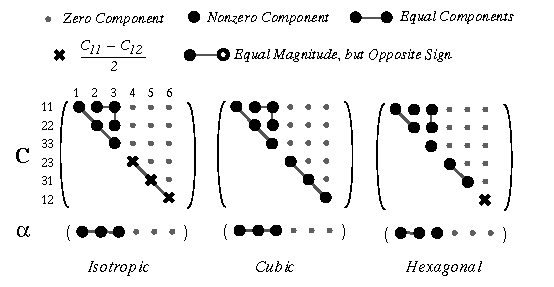OOF: Finite Element Analysis of Microstructures
Next: empty Up: Element Types and their Previous: Element Types and their Contents
Subsections
isotropic
An isotropic element has the same stiffness independent of the loading direction or the plane on which the load is applied.
According to Figure 4.2, there are two
independent elastic constants. OOF uses the Young's modulus ![]() and
the Poisson's ratio
and
the Poisson's ratio ![]() for the two input variables. In the case of
plane stress, the
for the two input variables. In the case of
plane stress, the ![]() stiffness matrix is:
stiffness matrix is:

For plane strain, the stiffness matrix is:

Parameters
- young
- The Young's modulus
 [stress].
[stress].
- poisson
- The Poisson's ratio
 [dimensionless].
[dimensionless].
- alpha
- The coefficient of thermal expansion [inverse temperature].
/* Send mail to the OOF Team *//* Go to the OOF Home Page */
